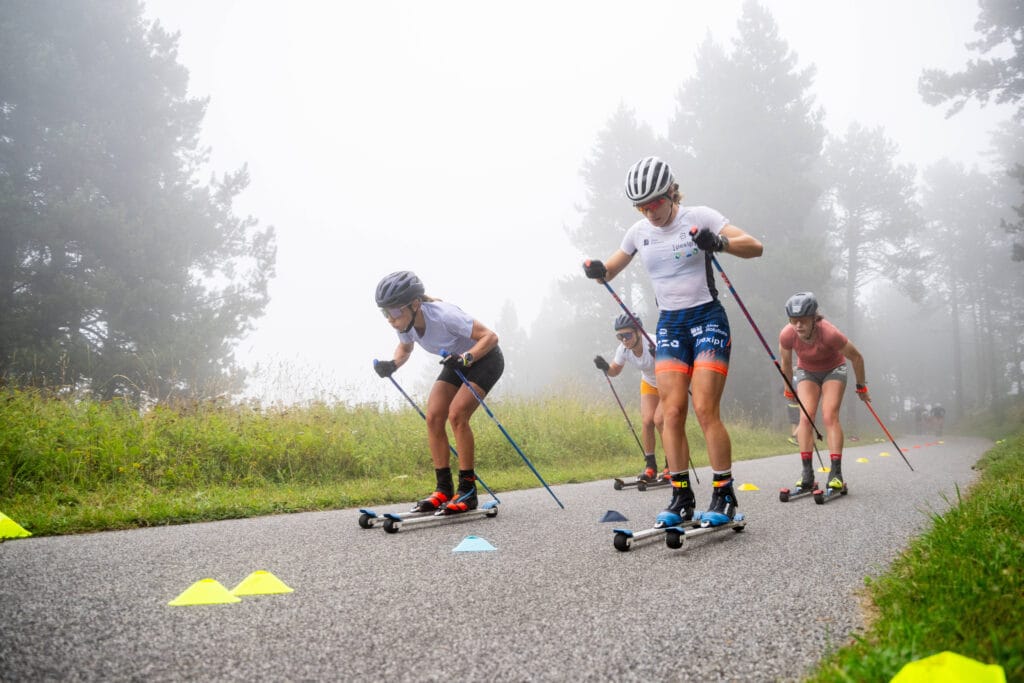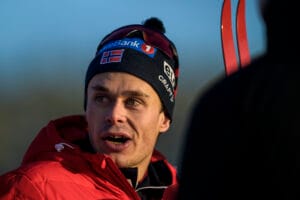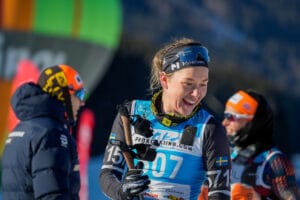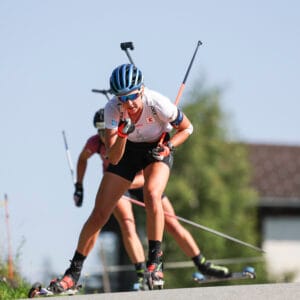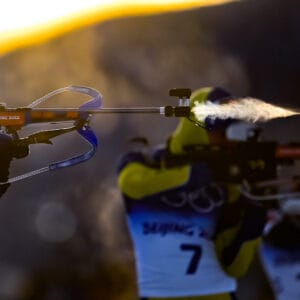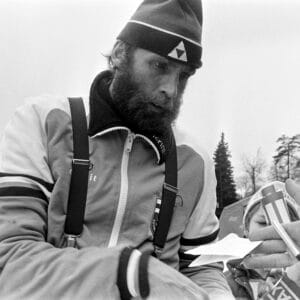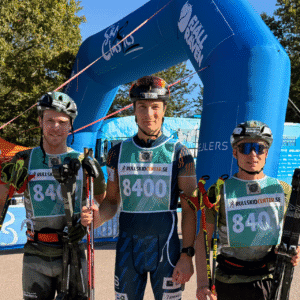Roller skiing or hill bounding – which is the key autumn workout?
The autumn training season is decisive for cross-country skiers. After laying the foundation in the summer, workouts become increasingly ski-specific, and every athlete must find the right balance between different methods.
Two of the most critical training forms in autumn are roller skiing and hill bounding intervals with poles. Both develop qualities needed for winter snow, but their roles and effects differ.
Hill bounding training – strength, efficiency, and a competitor’s mindset
Hill bounding training is a traditional cornerstone of autumn preparation. The workout is done with poles while walking or jogging uphill. The impact is mainly on strength and power, as pushing uphill engages the upper body and core, while also providing a strong stimulus to the legs. The heart and lungs are also heavily challenged, as the heart rate quickly climbs to high levels on the slope.
Its advantage lies in simplicity and ski-specificity. The rhythm and pole use closely resemble diagonal stride and double poling in classic skiing. Combined with the physical demand of the hill, the workout develops both muscle strength and skiing efficiency: every push forces efficient power use and proper breathing rhythm. Hill bounding intervals also require mental toughness. Long repeats in steep terrain build the competitor’s mindset in a way no other workout fully replicates.
Different interval lengths bring varied effects. Short one-minute efforts build explosive power, while 2–4-minute efforts target speed endurance. Longer 5–8-minute climbs simulate race intensity, developing maximum oxygen uptake and mental resilience. The mix makes hill bounding training with poles a highly versatile session.
Also Read – SkiErg vs. Ercolina: Which double-poling trainer is right for you?
The limitations of hill bounding training
Although highly effective for developing strength endurance and VO₂ max, hill bounding training has its limits. The technique resembles diagonal stride and partly double poling, but does not match the movement of roller skiing or real skiing on snow. This shows especially in double poling, the decisive technique of modern skiing and long-distance racing.
Roller skiing offers a superior platform for double-poling, as it develops glide, weight transfer, and upper body endurance in a manner that hill bounding training cannot.
In uphill intervals, the leg contribution remains significant, reducing the specific load on the upper body and core. For long-distance skiers whose results depend on double-poling endurance, this is a key limitation.
Therefore, even a high volume of hill bounding work cannot replace roller skiing if the goal is well-rounded ski development. Smart training combines both: hill bounding brings raw strength and VO₂ max stimuli, while roller skiing ensures technical sharpness and competitive double-poling ability.
Read More – Core strength: the game-changer for skiers
Roller skiing – glide, balance, and ski-specific training
Roller skiing is the autumn workout that comes closest to real skiing. The wheels replace snow, but the biomechanics and technique are nearly identical. This makes roller skiing irreplaceable for developing technique, rhythm, and efficiency.
It is also excellent for endurance, allowing long, easy sessions as well as varied interval training. In autumn, focus is often on speed endurance with long, steady efforts. For example, 30–60 minutes at threshold pace provides a race-like load while reinforcing technique. Shorter 4–6-minute intervals in moderate uphill complement this and prepare for winter intensity.
Double-pole sessions, in particular, strengthen upper body endurance, which is essential in modern skiing and the foundation of long-distance performance.
Also Read: Autumn season begins – Training for skiers before the snow arrives
Autumn challenges on rollers
However, roller skiing in autumn has its challenges. Rain makes asphalt slippery and hazardous, especially when traveling downhill or through corners. Classic technique on rollers can be tricky in the dark, with leaves, sand, and debris adding to the danger. Double poling is slightly safer, as it reduces the demands on balance.
Darkness also adds risks. Drivers may not see roller skiers, lighting is often poor, and reduced visibility lowers reactions. These factors increase the likelihood of training accidents.
Because of this, hill bounding with training with poles often becomes irreplaceable in dark autumn conditions. Hills are usually nearby, training can be done without traffic or weather risks, and the load is guaranteed.
This doesn’t mean roller skiing should be avoided, but it requires careful planning, including using bright lights, reflectors, and safe routes, to keep training both effective and secure.
Read More: Where to go for a quality autumn training camp?
Which is more effective – hills or rollers?
The question has no single answer. Hill bounding training develops muscle strength and maximum oxygen uptake with an intense stimulus. Roller skiing helps maintain and improve technique, efficiency, and endurance. In reality, they complement each other, and neither can fully replace the other.
For skiers preparing for the race season, both are essential. Hill bounding with poles provides the foundation of strength and racing intensity, while roller skiing keeps technique sharp and ensures the feel of skiing remains intact. Together, they build the comprehensive preparation needed for success.
Also Read: Nutrition fundamentals for recreational skiers
The winning combination of autumn training
It’s not about which is better – hill bounding or roller skiing. Both are necessary. Hill bounding provides raw strength, VO₂ max development, and mental toughness, while roller skiing sharpens technique and develops endurance in a ski-specific manner. When rain, darkness, and slippery roads limit roller skiing, hill bounding provides a simple and safe alternative. Combining the two builds the foundation for a successful winter season.
Teemu Virtanen’s comment
Personally, I don’t do much hill bounding training in summer, focusing more on roller skiing. In autumn, I add pole walking and jogging, often in hilly terrain such as the Lahti competition tracks, rather than structured hill bounding intervals. Uphills can be walked or even run hard, creating a natural intensity workout without the monotony of classic hill bounding repeats.
I also combine circuit training or plyometrics with pole walking/running – for example, doing jumps or push-ups at the top of the hill and repeating them throughout the workout. This makes a basic session highly effective, blending endurance with strength and intervals. I recommend this type of training to both recreational and competitive skiers, as it’s easy to do and adds welcome variety.
Are you interested in training for long-distance, traditional cross-country skiing and biathlon? Click HERE and read more about it.
